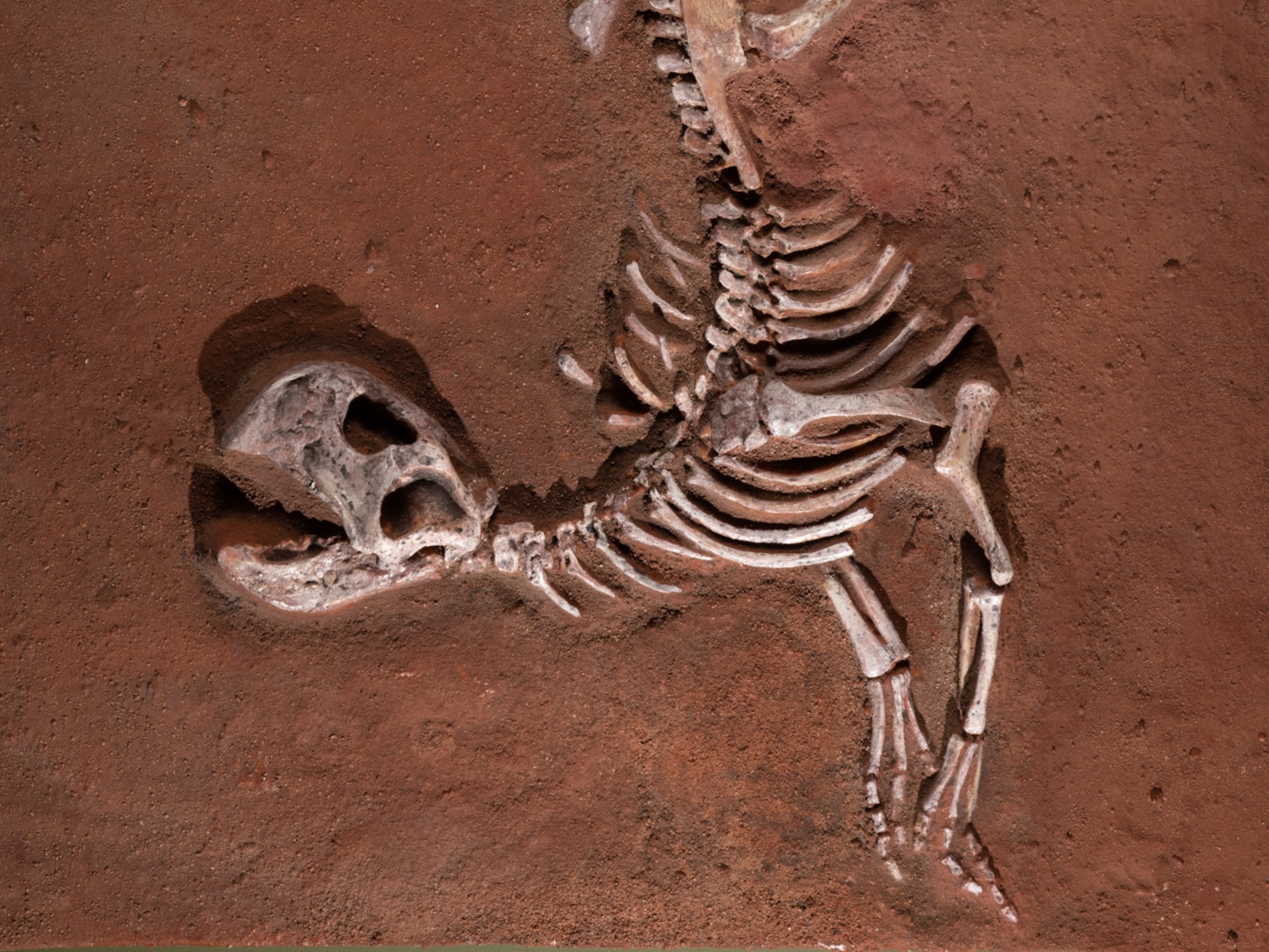Giant Anaconda Skin Stokes Mystery of Maine’s Elusive 'Wessie'
The skin’s placement could be a hoax—or evidence of “Wessie,” a supposedly massive snake that recently has grown into a local legend.

A snakeskin found on a picturesque riverbank in the northeast United States belongs to an anaconda—the latest twist in the baffling story of “Wessie,” a supposedly enormous snake that has become a local legend in the town of Westbrook, Maine.
Sightings of the snake began in June, when a woman filed a report with the Westbrook police department claiming to have seen a snake as large as a truck, with a head the size of a basketball.
Soon thereafter, a late-shift police officer patrolling near the first sighting saw a large snake eating a mammal, possibly a beaver. And on August 20, a man walking along the Presumpscot River stumbled across the molted skin of a 12-foot-long snake, near the other two sightings.
With each sighting, the mystery deepened—and the local community’s fascination with its strange new mascot grew. Clothing stores began selling Wessie-themed shirts. One local brewery even made a special-edition beer in honor of the snake.
“It’s kind of picked up steam with each sighting, and the social media thing has been big,” says Westbrook Police Captain Sean Lally. “A lot of people have taken it as a lighthearted thing—kind of like our Loch Ness monster.”
As media buzz grew, Westbrook officials sent a sample of the snakeskin off to John Palcyk, a biologist at the University of Texas at Tyler, for genetic analysis. Placyk then sequenced the skin’s mitochondrial genome and found that it belonged to an anaconda—a shocking find that officials announced on August 30.
“It was pretty unexpected, I’ll tell you that,” Palcyk said to Steve Annear of the Boston Globe. “This was a 100 percent match to an anaconda.”
Whither Did It Slither?
To refine the ID, Placyk sent along his sequence to Jesús Rivas, an anaconda expert at New Mexico Highlands University, who compared it to a genetic database of anacondas from across South America.
In a phone call, Rivas says that the skin belongs to a female green anaconda (Eunectes murinus) that’s at least 10 to 12 years old, based on the skin’s size. The snake’s genetic quirks also suggest that its ancestors were most likely from Peru or Bolivia, though the snake probably was bred in the United States. (Find out more about green anacondas—the world’s largest snakes, pound for pound.)
So how did the snake end up in Maine?
First, it’s still not clear whether the skin’s placement was an elaborate hoax meant to stoke Wessie hype. But if Westbrook is legitimately home to a loose anaconda, Lally thinks that it was released into the wild by its owners, perhaps because they could no longer care for it.
(These snakes can jump—and scientists want to know why.)
“It would have had to come from someone who either caught it or bought it somewhere, brought it here, and then decided to let it go, for some reason,” he says.
This sort of reptile buyer’s remorse is rare in Maine, says Lally, but it happens elsewhere in the United States. In Florida, the phenomenon has contributed to a booming—and ecologically disastrous—population of Burmese pythons in the Everglades, an invasive group seeded mostly by the 1992 destruction of a reptile breeding facility by Hurricane Andrew. (Find out how pythons have wreaked havoc on Florida’s native wildlife.)
But given the snake’s size and age, Rivas suspects that its owners were dedicated, and he maintains instead that the anaconda got out of its enclosure. “People who have a snake of this size normally are responsible keepers, [and] it’s very unlikely that they don’t have the awareness that the snake won’t survive in the wild,” says Rivas. “I doubt that it was released; more likely, it escaped.”
If Wessie’s owners accidentally lost her, however, there’s a good reason why they aren’t putting up “lost pet” signs: It’s illegal in Maine to own an anaconda.
Winter Is Coming
Regardless, Maine’s bitterly cold winter ensures that the snake’s escape will be brief, one way or another. In the wild, Rivas says that anacondas aren’t found in areas with temperatures below 72°F. Temperatures below 50°F are considered fatal, and night temperatures in Maine are poised to cross that threshold.
“If there is an anaconda, it’ll be dead pretty soon,” says Lally.
Lally adds that the snake doesn’t pose a major public safety threat, though he recommends that people not let their dogs and cats loose along the Presumpscot River. In the meantime, officials continue to look for the snake—and Rivas remains hopeful that they can catch it alive and unharmed.
“It’s a curiosity, not a crisis,” says Rivas. “The only one in danger here is the anaconda.”
Editor's note: This article has been updated to clarify the origins of Florida's invasive Burmese python population. We thank reader Steve Belanger for his comments and insight.




